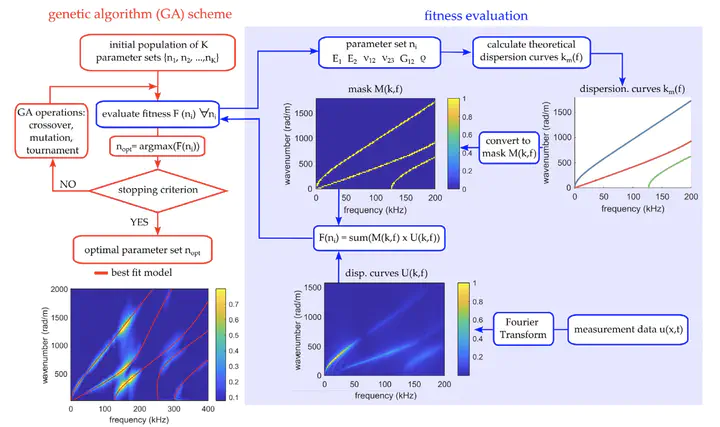 Inversion procedure
Inversion procedureAbstract
Detecting surface contamination on thin thermoformed polymer plates is a critical issue for various industrial applications. Lamb waves offer a promising solution, though their effectiveness is challenged by the strong attenuation and anisotropy of the polymer plates. This issue is addressed in the context of a calcium carbonate (CaCO3) layer deposited on a polypropylene (PP) plate. First, the viscoelastic properties of the PP material are determined using a genetic algorithm inversion of data measured with a scanning laser vibrometer. Second, using a bi-layer plate model, the elastic properties and thickness of the CaCO3 layer are estimated. Based on the model, the sensitivity analysis is performed, demonstrating considerable effectiveness of the A1 Lamb mode in detecting thin layers of CaCO3 compared to Lamb modes A0 and S0. Finally, a direct application of this work is illustrated through in-situ monitoring of CaCO3 contaminants using a straightforward inter-transducer measurement.